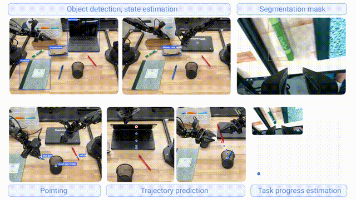java使用invoke反射调用成员函数时遇到的坑--> IllegalArgumentException: wrong number of arguments
参考博客:https://www.cnblogs.com/firstdream/p/4830960.html问题背景:使用invoke传递参数时,要考虑参数的个数:public Object invoke(Object obj,Object... args)/*Parameters:obj - the object the underlying method is invoked fromargs
·
参考博客:https://www.cnblogs.com/firstdream/p/4830960.html
问题背景:
使用invoke传递参数时,要考虑参数的个数:
public Object invoke(Object obj,
Object... args)
/*
Parameters:
obj - the object the underlying method is invoked from
args - the arguments used for the method call
Returns:
the result of dispatching the method represented by this object on obj with parameters args
*/以下两个成员函数,虽然一个是可变参数,一个是Object[]。但是在invoke函数中传参时当做一个Object来看待,如果想传递参数Object[] objects = {a, b};(见代码),需要加(Object)类型强制转换,
否则报错 java.lang.IllegalArgumentException: wrong number of arguments
public void addpp(Object... objects)
public int addproxy(Object[] objects)以下的成员函数,参数个数为2个,两个int[],在invoke函数传参时可以传一个Object[2]不用加(Object)强制类型转换。
public int add(int[] a, int[] b)
代码概述:
有三个函数:
参数分别为可变参数、Object[]、两个int[],
主函数:
传递同样的两个数组,将两个数组转换为一个Object[],
使用invoke反射调用三种方法时,要对Object[]参数酌情加强制类型转换。
以下是测试代码:
package Ques;
import java.lang.reflect.InvocationTargetException;
import java.lang.reflect.Method;
public class Father {
public void addpp(Object... objects) {
System.out.println(objects.length);
//System.out.println("结果是 " + addproxy(objects));
}
public int add(int[] a, int[] b) {
return 0;
}
public int addproxy(Object[] objects) {
return add((int[]) objects[0], (int[]) objects[1]);
}
public static void main(String[] args) {
int[] a = {0, 1};
int[] b = {1, 2};
Object[] objects = {a, b};
Father son = new Father();
try {
Method m = Father.class.getDeclaredMethod("addpp", Object[].class);
Method m2 = Father.class.getDeclaredMethod("add", int[].class, int[].class);
Method m3 = Father.class.getDeclaredMethod("addproxy", Object[].class);
System.out.println("参数: m " + m.getParameterCount());//-->结果为1
System.out.println("参数: m2 " + m2.getParameterCount());//-->结果为2
System.out.println("参数: m3 " + m3.getParameterCount());//-->结果为1
m.invoke(son, (Object) objects);//输入的参数个数为1个
m2.invoke(son, objects);//输入的参数个数为2个
m3.invoke(son, (Object) objects);//输入的参数个数为1个
} catch (NoSuchMethodException e) {
e.printStackTrace();
} catch (IllegalAccessException e) {
e.printStackTrace();
} catch (InvocationTargetException e) {
e.printStackTrace();
}
/*son.addpp(a,b);//-->结果为2
son.addpp(objects);//-->结果为2
son.addpp(a);//-->结果为1
son.addpp(new Object[2]);//-->结果为2
son.addpp(new int[2]);//-->结果为1
son.addpp(new String[2]);//-->结果为2
son.addpp((Object)objects);//-->结果为1
son.addpp((Object) new String[2]);//-->结果为1*/
}
}
更多推荐
 已为社区贡献2条内容
已为社区贡献2条内容








所有评论(0)